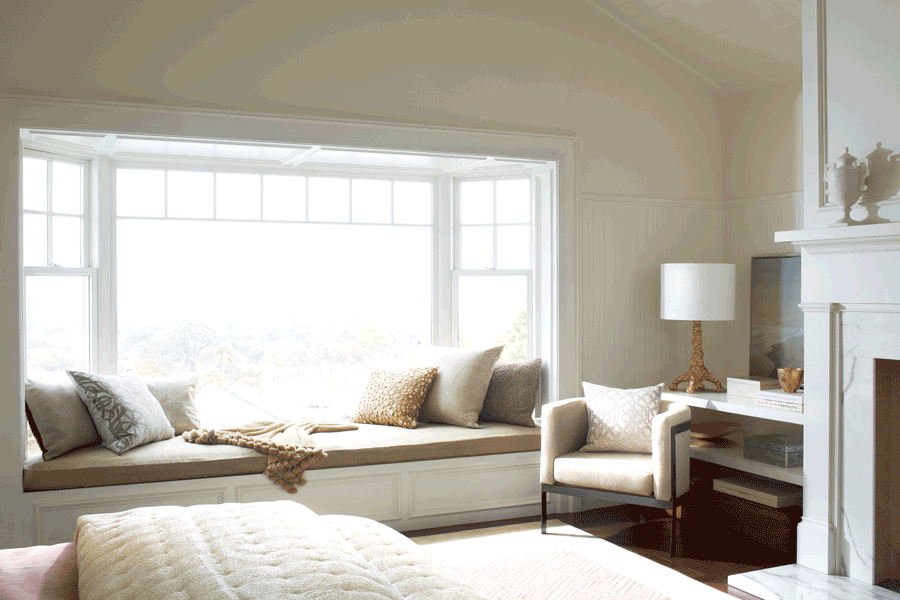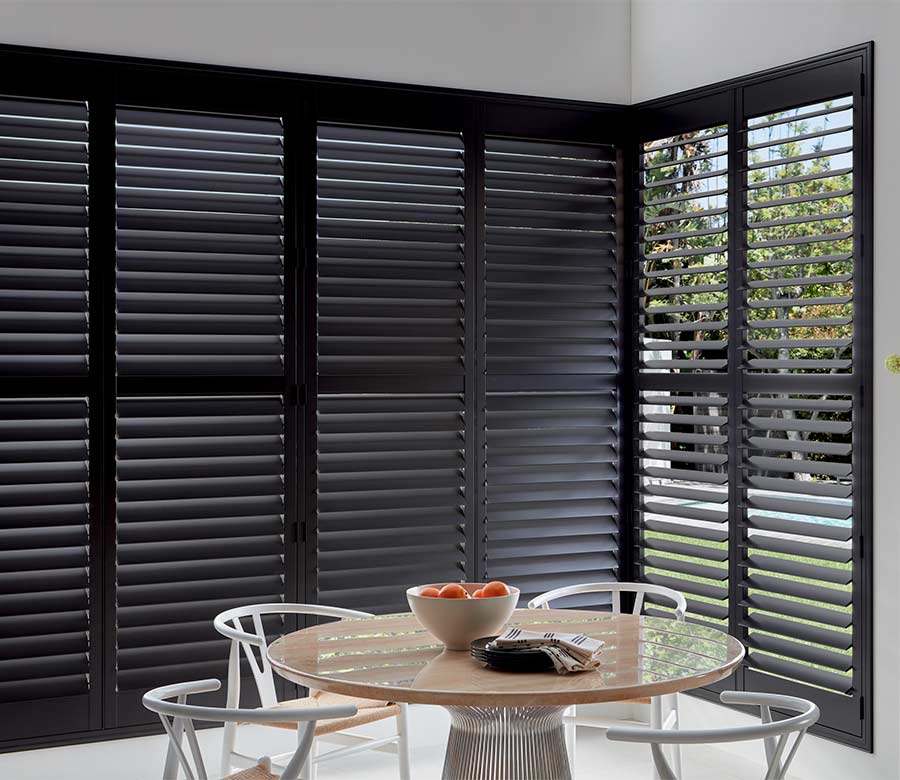Have you felt it already? Summertime heat is on the way. It’s about time you figured out how to keep your home cool. Our design experts are here to point out the three ways your home is facing heat gain. Then, we’ll show you some of the best window coverings for combatting that heat.
It’s Called Heat Transfer.
Heat transfer is the way the sun heats the interior of your home. Heat transfer results in heat gain, and that’s what you don’t want in the midst of a hot summer. There are three distinct types of heat transfer that involve your windows.
Radiant Heat
When the sun’s light is traveling through the air, you might not notice the heat. Follow those rays until they hit a surface–oftentimes, an area of flooring, furniture or walls inside your home. These are called hot spots because the heat is intense. That’s radiant heat. And, it heats up your home by continually heating up areas–with nowhere for the heat to escape. Pets LOVE these hot spots for a snooze.

Convection
The idea of convection is best explained by looking at the relationship between cool air and warm air. They mix, and then separate–like the concept of heat rising. Warm air is less dense, so it will rise, while cool air is more dense. Exterior air is always moving…even on a day that doesn’t seem windy. That moving air on the exterior of your home is drawn to the air on the interior of your home because of the difference in temperature. The easiest path is the windows. On cool days, cold air carries the heated interior air away from the windows. On hot days, warm exterior air carries cool interior air away.

Conduction
The third type of heat transfer is conduction, where solid objects are heated up. Think of like a spoon in hot tea. The spoon is room temperature before being submerged. Then, once in the hot tea, the spoon immediately takes on the heat. Not only that, but even the part that isn’t in the tea gradually heats up. This happens to the glass of your windows. The exterior of the glass heats up because of radiant heat, but then the heat is conducted through the glass to the interior, where it easily allows the interior air to increase in temperature.

There are a number of reasons homeowners choose to cover their windows. Here in Minnesota, energy efficiency is a big one. We want to show you ways to keep your home cool in summer, but the truth is, energy efficient window coverings are important for year-round comfort.
Do Window Coverings Reduce Heat Gain?
Yes. When you cover windows, you reduce the light from entering your home and provide a barrier between the exterior and interior air. That being said, there are some window coverings that are better at this than others. As your local Minneapolis-St Paul area window covering experts, it’s our job to fill you in on the best options–based on the type of heat transfer you’re facing.
The Best Shades for Reducing Heat Gain
Cellular Shades
Honeycomb shades will always appear at the top of the list for energy efficiency. The key to their award-winning performance is the cellular construction. The cell traps air, insulating the interior from the exterior. These shades also keep sunlight from entering your home, which stops those hot spots from even starting. Sorry, Fluffy.

Using the same concept of cellular shades insulating the window, we’ve got a relatively new collection to show off! Sonnette Shades are roller shades with cellular pockets. Many homeowners love the thermal protection provided by honeycomb shades, but want the roll-away capability of roller shades.

Fabric Shades
A consistent favorite in the world of window treatments, Roman Shades are a great way to reduce heat gain in your home. When it comes to roman shades with folds of fabric that cascade down the windows, the fabrics create an insulating barrier. Depending on the opacity of fabrics you choose, you can reduce radiant heat a great deal just from blocking the entering light. Roman shades can also be lined for added protection.

We’ve got window shades you would never expect to be listed on an energy efficiency list: Sheer Shades. But, hear us out. When you’ve got certain windows that are facing radiant heat, sheer fabrics have a dynamic characteristic. They actually reflect that sunlight, which means it doesn’t enter your home. For homeowners who have windows with a high R-value, which has strong insulation, you might not worry so much about the other types of heat transfer. But, if light is shining into your home, hitting surfaces, you’ll still be facing heat gain. This could easily be conquered with sheers. They bring in soft light and show off the view, while keeping the direct light out.

Draperies Reduce Heat Gain
Custom draperies have been considered a great way to keep your home cool for generations. There will be certain fabrics that will do a better job than others, and that’s what our window covering designers are for! They can guide you to the best fabrics for your home’s specific needs, while enhancing the style. Specialty liners can be added for even more benefits.

Do Shutters Protect Against Heat?
The answer is yes. Interior shutters frame the window, creating a protected space between the window and the interior air. With the frames and louvers in place, air flow is greatly reduced, even with the louvers adjusted open. Adjust the louvers closed, and you stop the heat transfer. Open them to direct light towards the ceiling, and you have the chance to illuminate the ceiling while protecting the rest of your home.

Ready to Keep Your Home Cool?
At Aero Drapery & Blind, we want to help you understand the heat transfer you’re facing so you can choose the best solutions. Knowledge is power! When you decide you’re ready to start the process of new window treatments for your Minnesota home, we’d be happy to help. We make the process fun and exciting. It shouldn’t be stressful. Stop by one of our local window treatment stores to see everything in person, from fabrics to operating features. Then, schedule your FREE in-home design consult so we can give you our best advice for what will work in your home. We’re excited to work with you on your next project!


